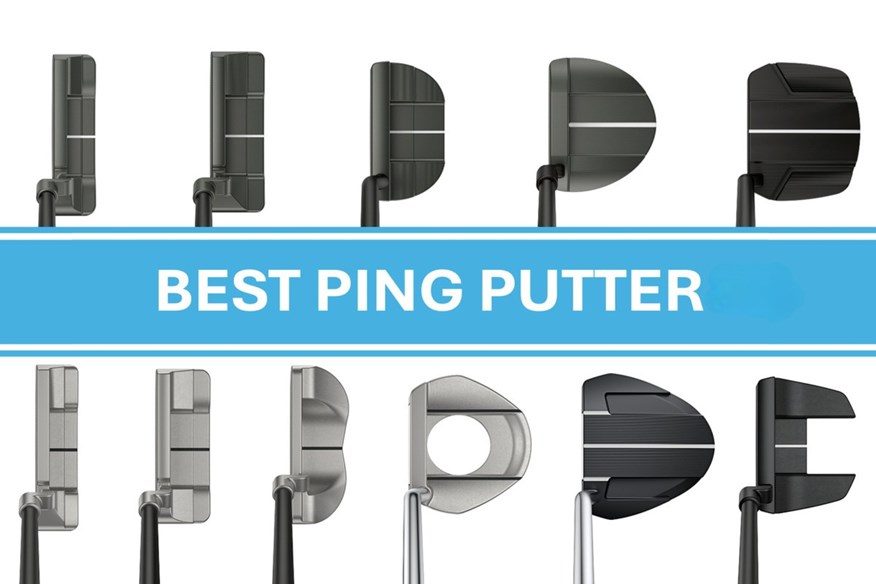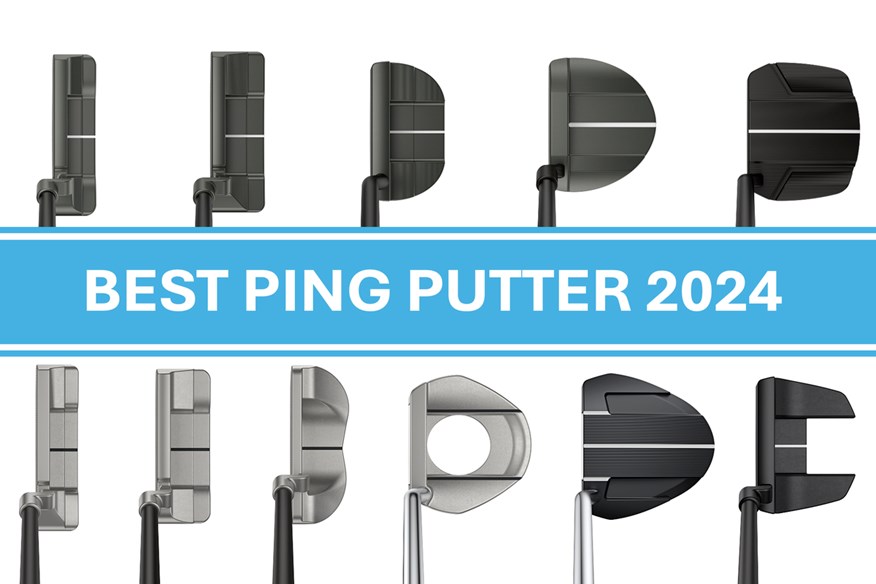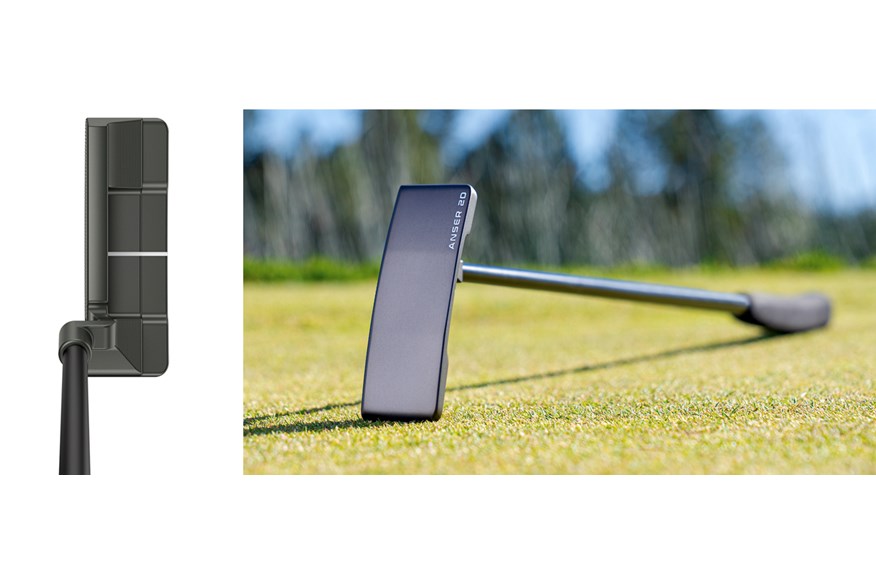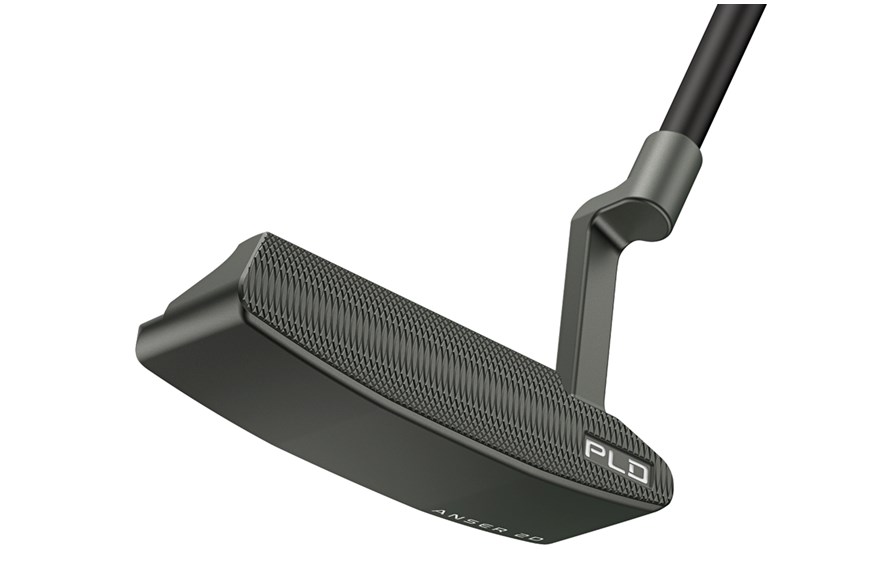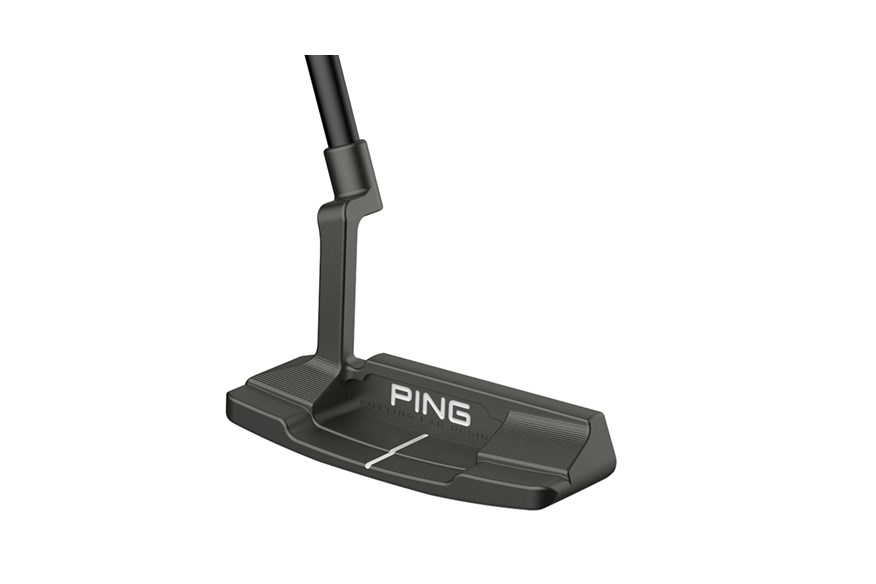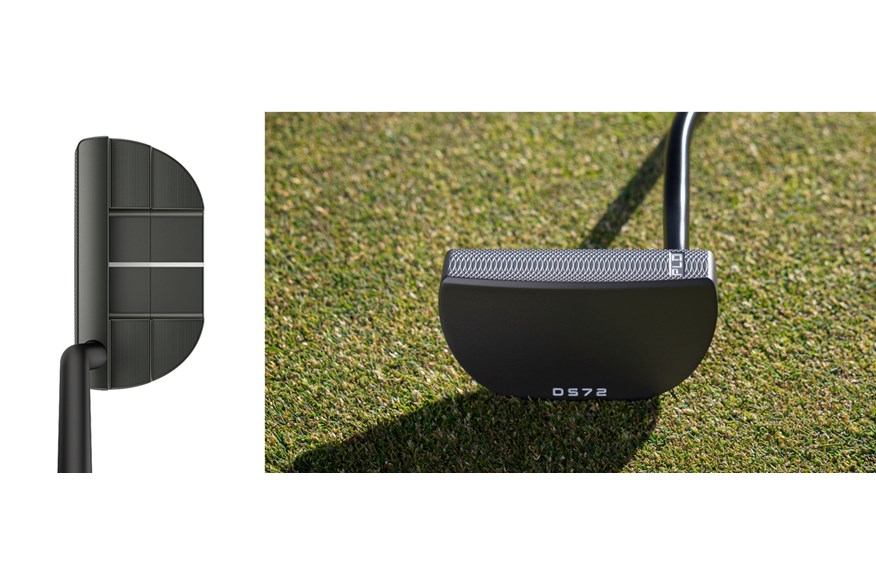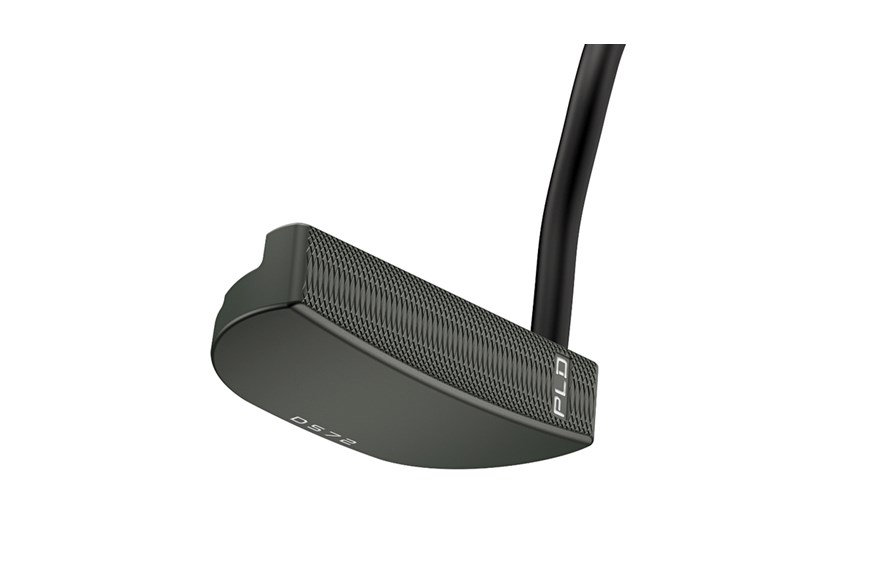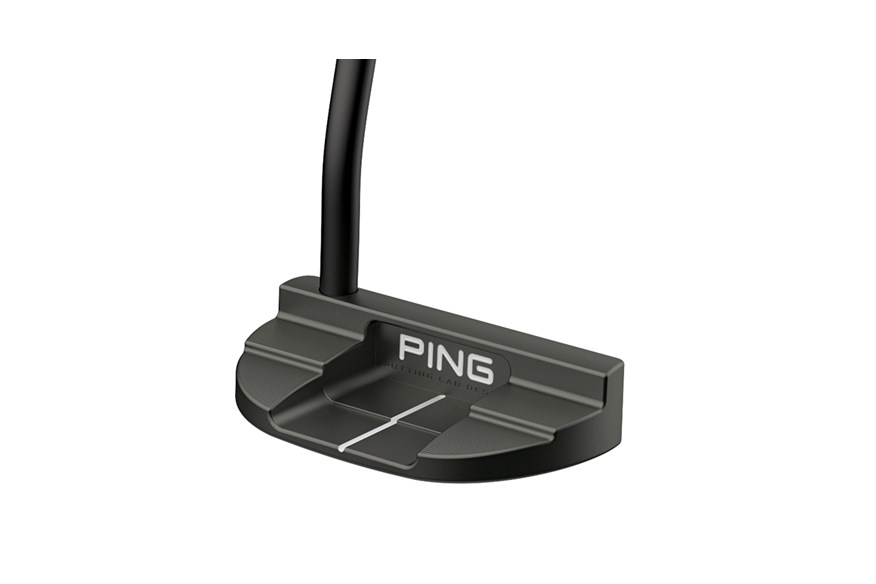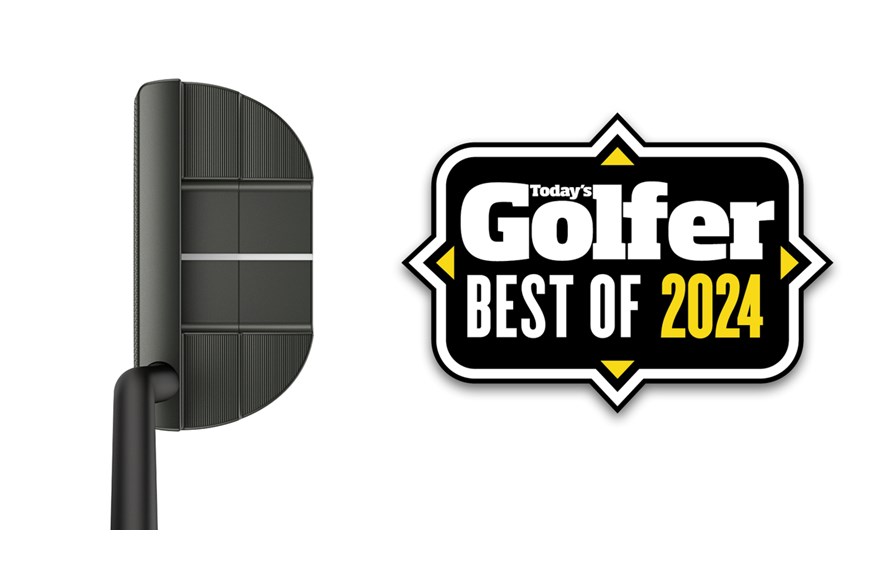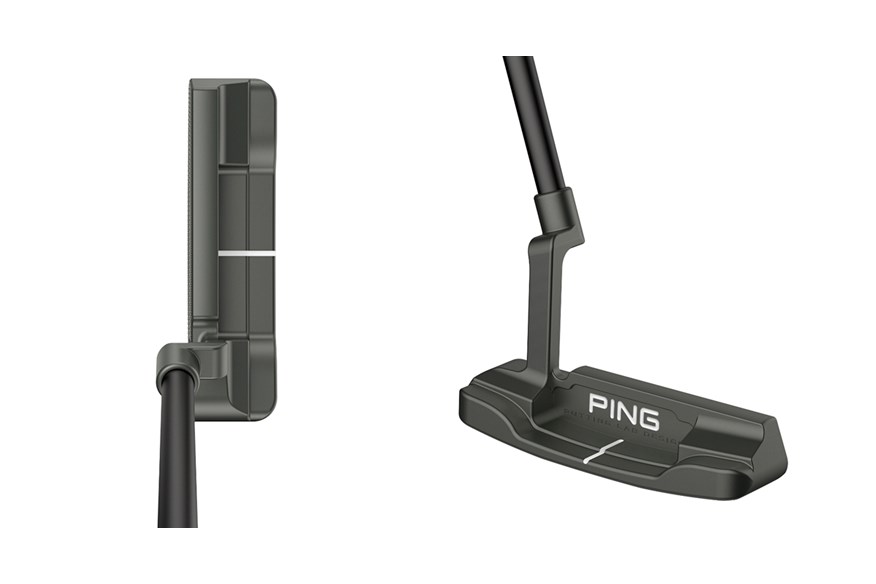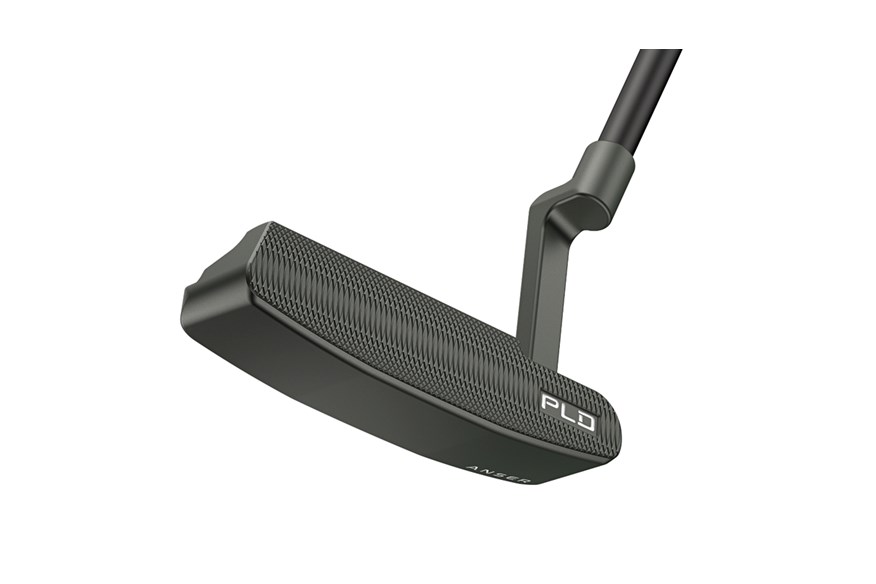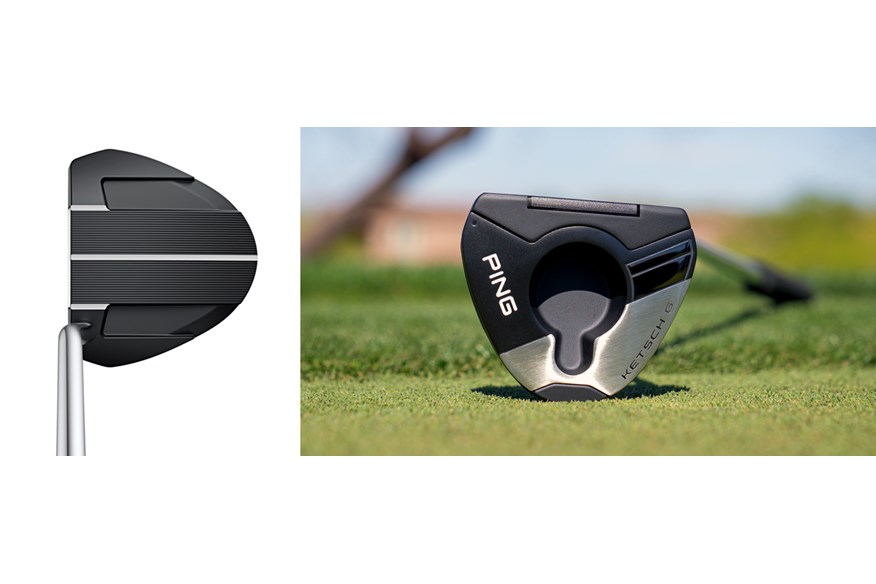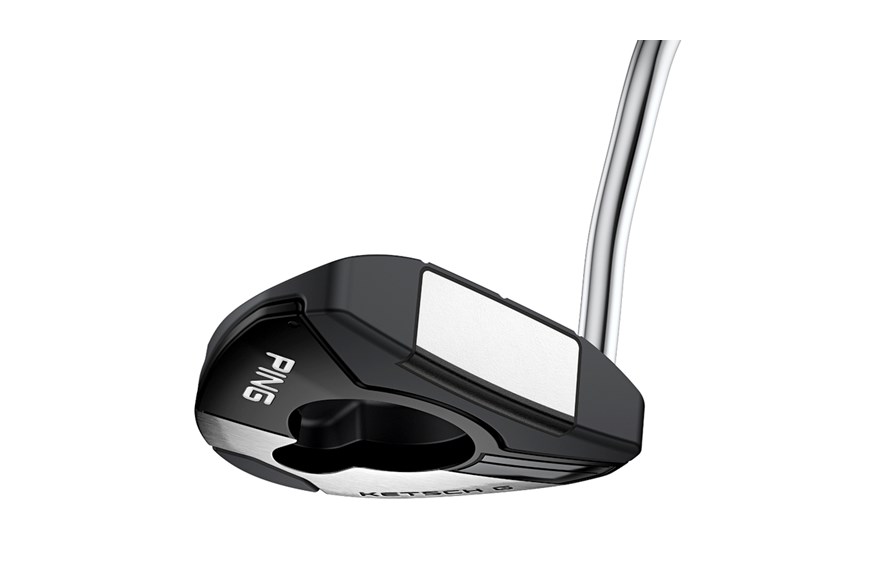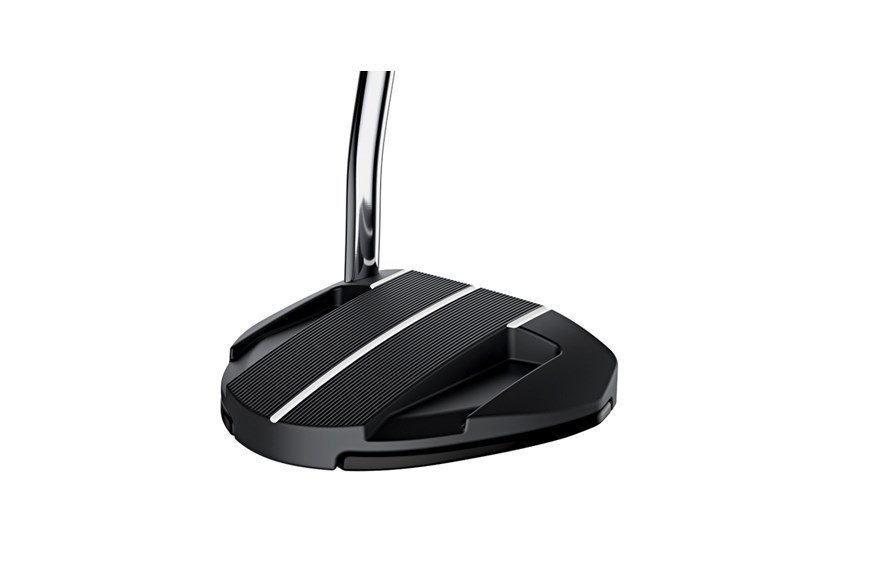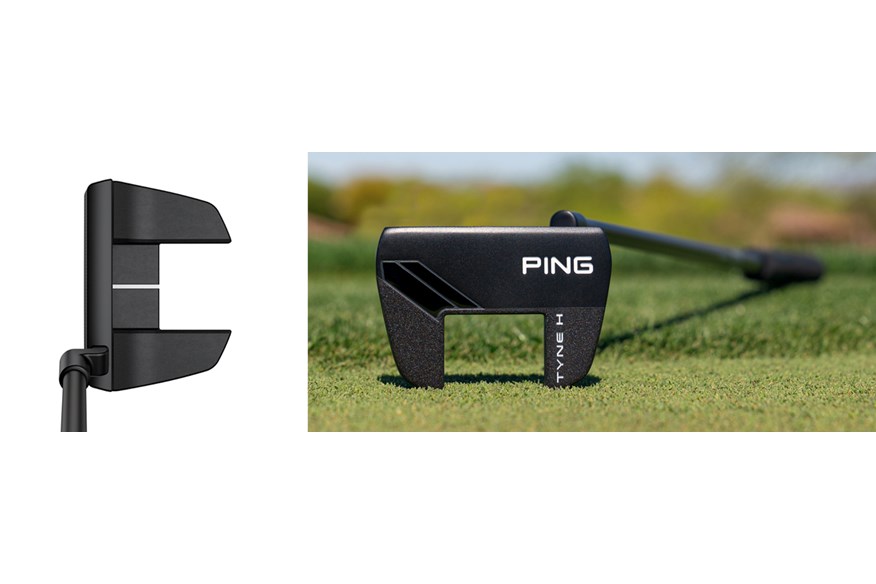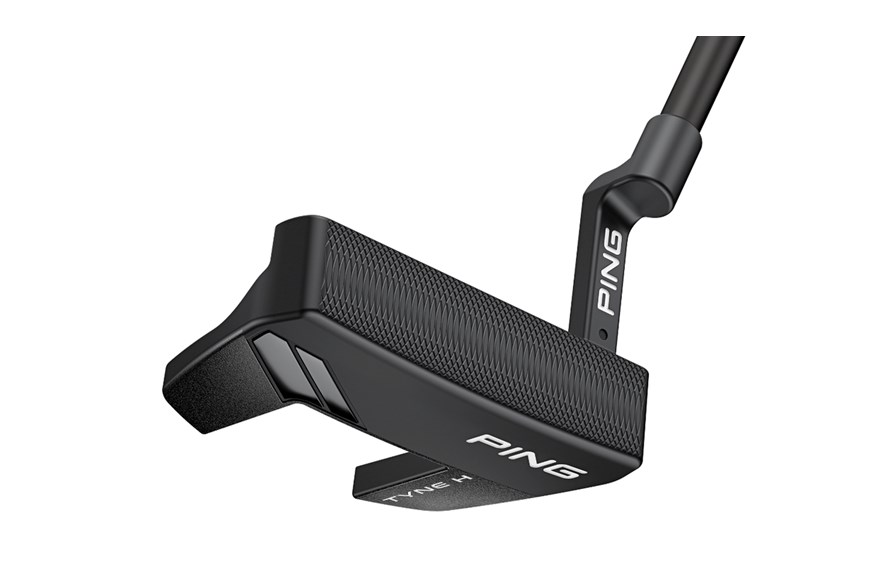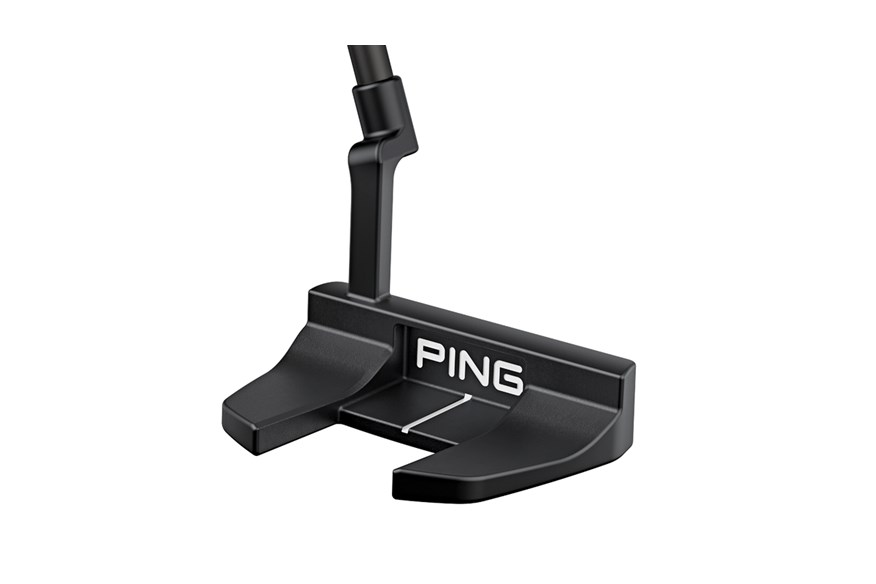Best Ping Putter 2025: Which suits your stroke, eye, and budget?
Last updated:
Ping founder Karsten Solheim changed the face of golf when he started making putters back in 1959 (the 1-A model was his first design), but it wasn’t until the first toe and heel-weighted Anser hit the market in 1966 that Ping really started creating some of the best putters ever made. Since then, the best Ping putter designs have been copied a million times over, and many modern putter designs bought today are based on the shapes and profiles perfected by Solheim over 60 years ago.
In 2025 Ping have two putter families to choose between, the PLD Milled which offers golfers the precision of a 100% CNC Milled construction, and the multi-material 2024 models. Here’s how to choose which best suits you.
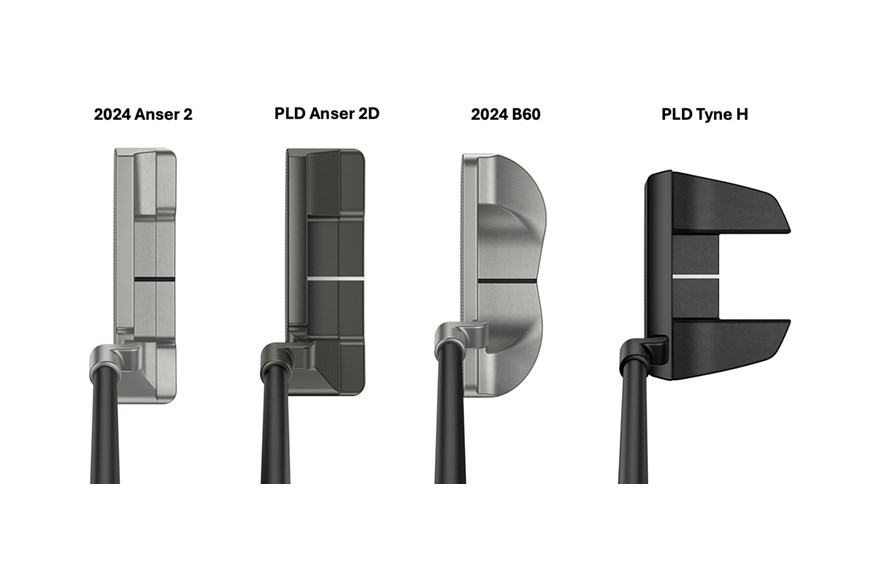
Best Ping Putters – Jump to:
- How we tested the putters
- What type of putter do you need?
- Everything you need to know about Ping PLD putters
- Everything you need to know about Ping putters
- Best Ping putters
- Buying guide & FAQs
How we tested the putters
To help you find the best Ping putter for your game, we’ve looked at all 11 of the company’s latest models.
TG Equipment Editor Simon Daddow and Test Pro Neil Wain both putted to a hole 15 feet away and hit at least 20 putts with each model tested. We’re listening for sound, looking for how putts roll across the surface of the green, and gauging the feel and feedback of the putter face. We consider the grip size, shape, and texture, whilst also paying attention to the shaft and the stability on off-center hits.
While we normally share all the data from our golf club tests, we don’t do that with putters. Whilst we do use a Foresight GC Quad launch monitor in putting mode to measure and gauge the roll, topspin, and skid of every putt hit, over the years we’ve learned that putting data is more player- and day-dependent than any other club in the bag.
So, whilst we use this data for analysis, we don’t base big decisions or recommendations on it, as history shows data is very likely to be different on another day’s testing. Essentially, we’re not comfortable making huge claims that one putter rolls better than another, because we know that on another day’s testing, the roles could be reversed.
You can read all about how TG tests golf equipment here.
What type of putter do you need?
All leading manufacturers – including TaylorMade, Odyssey, and Ping – offer a wide range of putters in different shapes, sizes, styles, and types, so how do you know where to start?
The biggest decision when choosing a new putter is whether you want a blade putter, a mallet putter, or a super-stable high MOI putter.
Blade putters
Blades are the most traditional-looking putters. They are typically quite slim, with a narrow footprint and profile. Blade putters traditionally have had toe hang, which means they suit golfers with an arced putting stroke, although face-balanced blade putters are available for those with straight back-and-through strokes today.
There has been a trend towards wider-bodied blade putters recently, which sit between a mallet and a blade and offer a bit more forgiveness and reassurance than a very slim body putter. Blade putters are less forgiving than mallet and MOI models as they twist more on off-center hits, which leads to putts losing energy so they travel less far, which can of course up your 3-putt percentage.
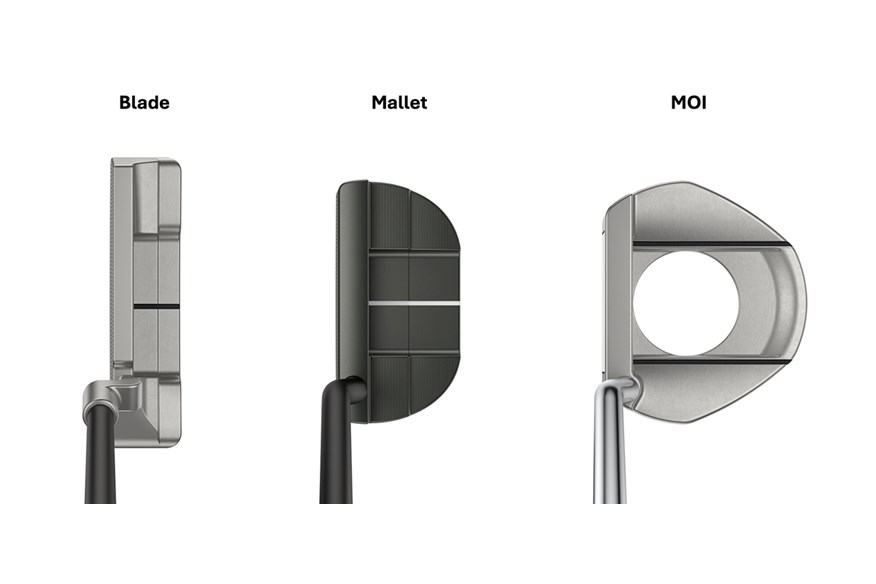
Mallet putters
Mallet putters tend to have a bigger footprint than blades, although the blade length from heel to toe is often shorter.
The wider body offers greater distance consistency on off-center strikes than you get with a blade, which can really help as you’ll be surprised how often you miss the middle of the face, particularly on longer putts.
MOI putters
This area of the market has really taken off in the last decade as all types of golfers have realized the performance benefits of super-stable putters.
Quite simply, you’re making the game harder by using a narrow-blade putter rather than an MOI Putter, especially on longer putts.
If you can accept the somewhat unconventional looks of the best MOI models, you’re giving yourself maximum benefit. It’s important to love the look of your putter, though, as confidence is such a huge part of the game on the greens.
Best Ping putters 2025
Best Ping CNC Milled blade putter: Ping PLD Anser 2D | View Offer
Best Ping CNC Milled mallet putter: Ping PLD DS72 | View Offer
Best Ping putter for MOI performance: Ping 2024 Ketsch G | View Offer
Best Ping putter for alignment help: Ping 2024 Fetch | View Offer
Best Ping fang style putter: Ping 2024 Tyne H | View Offer
The Ping putter model most like the original Anser: Ping PLD Anser | View Offer
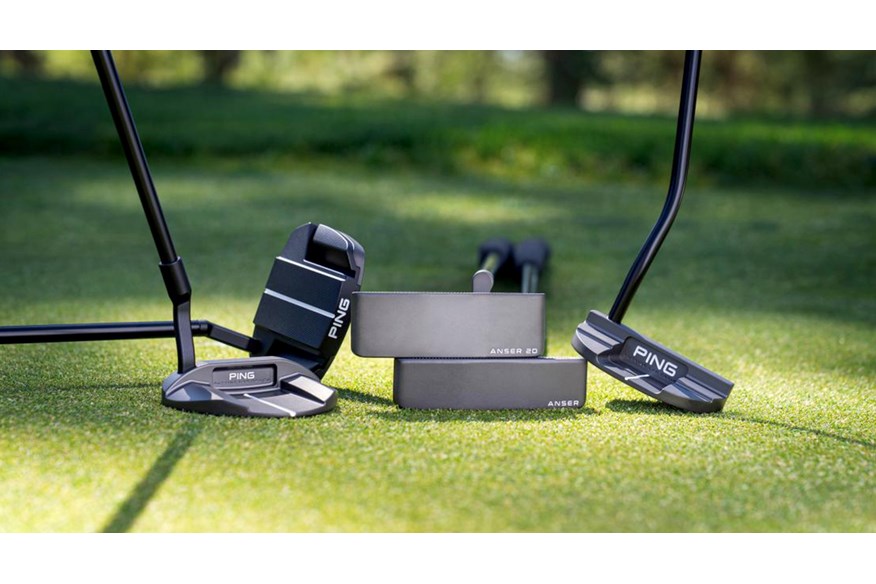
Everything you need to know about Ping PLD putters
After custom-engineering their staff professionals’ perfect flatsticks for years, 2022 was the year Ping opened up their most popular Putting Lab Designs to the public. Four initial models have now been boosted with a further five for 2025. Each head is created from 303 stainless steel and requires more than 4 hours on the mill to ensure each surface and radius is perfectly formed to meet the eyes of their crack tour team.
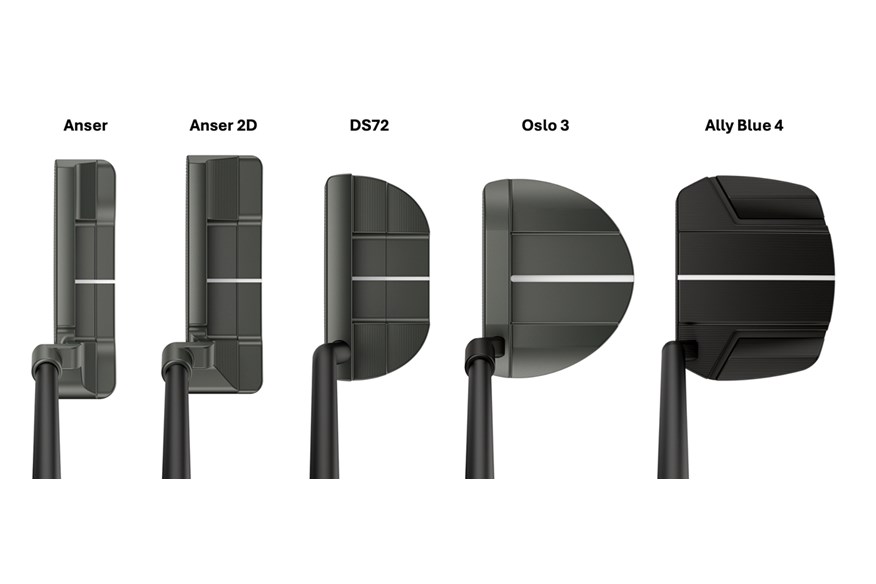
All six PLD models have very clean, unfussy appearances, a look driven by Victor Hovland, Tony Finau, and Bubba Watson, all of who’ve used PLD models to win on tour. Thanks to different hosel set-ups and various amounts of toe-hang there are PLD models to suit slight or strong arc players and those who like to swing the putter in a straight back and straight through motion. Expect a slightly firmer more responsive feel and feedback from PLD models as there’s no soft urethane face insert like some of Ping’s other 2024 models. Make sure you get the right set-up to compliment not fight how you perform on the dancefloor.
At 365g the head has a heel and toe weighted set-up so expect good stability and forgiveness, while a slight toe hang means the model best suits slight arc players.
I love the simplicity of this model, the crisp CNC-milled edges give a precise look in the play position, while the black finish and single sightline breed confidence on the dancefloor. Thanks to there being no soft urethane face insert expect a lovely responsive impact feel and great roll across the greens surface.
Ping PLD Anser 2D (2024) putter
Head Weight: 365g Stroke Type: Slight Arc Offset: Full Shaft
View Offer UK
Read our full Ping PLD Anser 2D putter review
Pros
- A stable modern wide-body blade
- Putters don't come anymore classy in the play position
- There's a choice of four stock grips
Cons
- At $449/£450 the PLD putters are a sizeable investment
| Stock shaft: | Black Chrome Stepless Steel |
| Stock grip: | Choose from four Ping PP58 models |
| Loft: | 3° |
Five new fully CNC-milled PLD models have appeared for 2024 and I'm drawn to the super simple DS72 mallet, which has been in the collection before. It’s the model favored by Norwegian Viktor Hovland and I can see why he feels this completely unoffensive model is the perfect fit for his game.
I’ve said before we’re fans of the blunt head shape, so the back of the head is parallel to the face which is perfect if your eyes struggle to deal with a full-on curved back mallet shape on the dancefloor. I love the DS72’s muted, sound, and firm no insert feel. Putts come off the face with very little skid or bounce and plenty of roll, so it’s a model I’d love in my own bag.
However, £450 is a lot of cash for a PLD putter that doesn’t appear on the surface at least to be crammed full of tech like a Cobra 3D Printed Supernova or TaylorMade Spider Tour. But you have to appreciate this model takes hours to CNC Mill which costs money and gives a very premium and precise end product.
If you’re happy spending at this level and are in the UK you should be aware Ping has also just opened a PLD fitting lab at Loughborough University. Where for an additional fee you can get fit for, and pretty much design your very own PLD model to your exact requirements. A service that’s very rarely available on these shores.
Ping PLD DS72 (2024) putter
Head Weight: 365g Stroke Type: straight Offset: Full Shaft
View Offer UK
Read our full Ping PLD DS72 putter review
Pros
- The straight back helps aid alignment
- The head is compact and cute
- The clever cavity back sizing makes a useful golf ball-width alignment aid
Cons
- The price is hefty
| Stock shaft: | Black Chrome Stepless steel |
| Stock grip: | Choose from four Ping PP58 models |
| Loft: | 3° |
The Anser is the putter of choice for so many golfers for clear reasons and this new PLD Anser can easily be one of their most successful iterations to date because of its increased forgiveness and alignment assistance.
If you prefer a putter that is slightly heavier and has a larger presence behind the ball then you might want to consider one of the best mallet putters, as opposed to a putter as sleight as the Ping Anser.
Ping PLD Anser 2024 putter
Head Weight: 350g Stroke Type: Slight Arc Offset: Full Shaft
View Offer UK
Read our full Ping PLD Anser putter review
Pros
- This is a timeless classic putter that won't age
- The attention to detail is first-class
- This model benefits from a sightline, a feature not found on all Anser putters
Cons
- This is one of the least forgiving putters in the Ping line-up
| Stock shaft: | Ping Composite (Black) |
| Stock grip: | Choose from four Ping PP58 options |
| Loft: | 3° |
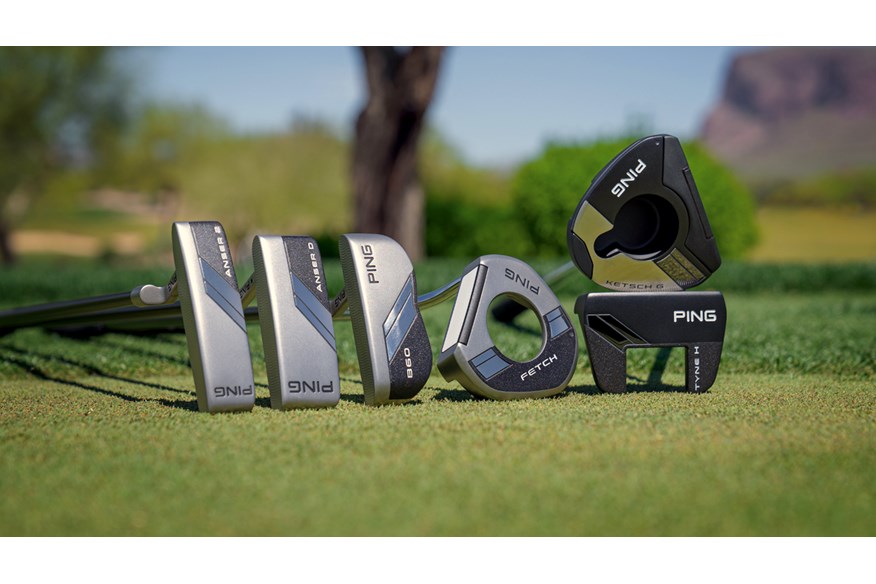
Everything you need to know about Ping 2025 putters
Where Ping PLD putters target 100% CNC Milled precision, the brand’s 2024 putter models go after optimizing performance through multi-material constructions. So, where PLD putter heads are created as one-piece heads, the 2024 models use tungsten weighting, polymer face inserts, and steel/aluminum body sections to improve feel and up forgiveness.
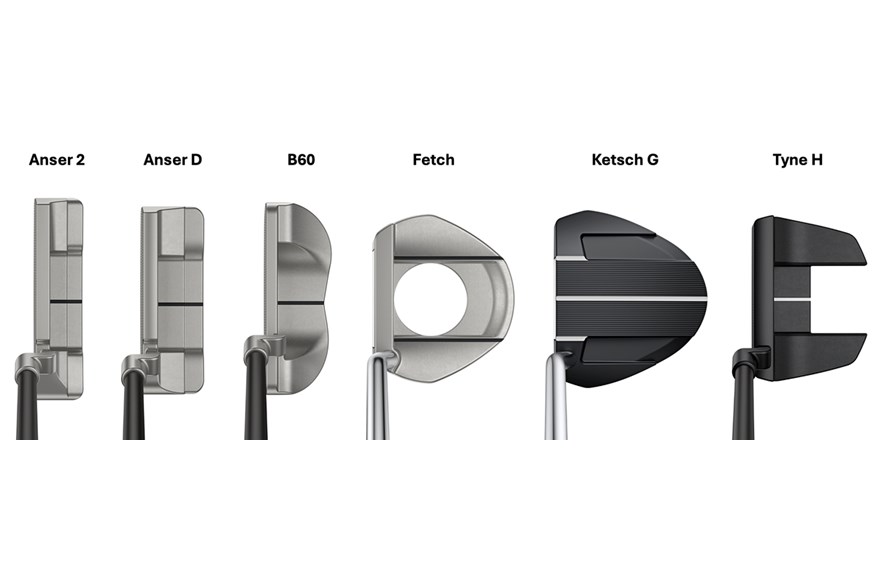
The 2024 family is made up of six big-selling popular Ping putter shapes, so no matter whether your preference is classic blades, forgiving mallets, or forgiving MOI fang style putters there’s a solution here for everyone. At this price, it’s well worth making the effort to get properly fitted as Ping offers some cracking grip choices to tailor the feel to you.
The Ketsch G is new for 2024. Expect a lightweight aluminum body with a 304 stainless steel soleplate to up stability, plus a dual-density Pebax face insert to feel soft on shorter feel putts and stable from distance.
I'd recommend this model thanks to its excellent stability performance that helps ensure on and off-center hits travel the same distance. The long sightline is also great for highlighting where the face is aiming and goes hand-in-hand with an alignment stripe golf ball. The two smaller golf ball width lines on the top edge concentrate focus on the impact zone, which I find helps hit truer putters from any distance more often.
Ping 2024 Ketsch G putter
Head Weight: 360g Stroke Type: Straight Offset: Full Shaft
View Offer UK
Pros
- The wide head shape inspires confidence
- The feel from the dual-density insert is good from any distance
- The alignment aids are second to none
Cons
- There is only one hosel option
| Stock shaft: | Chrome Stepless Steel |
| Stock grip: | Ping PP60 |
| Loft: | 3° |
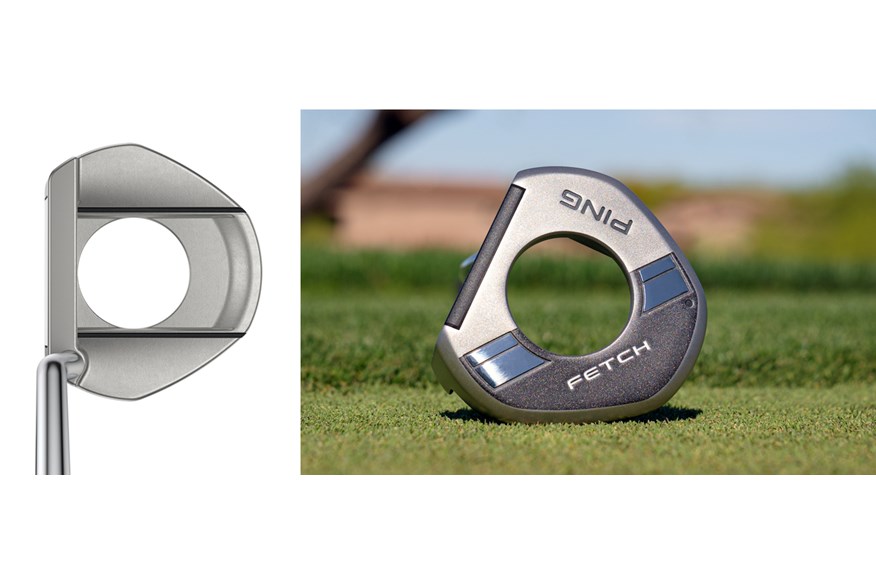

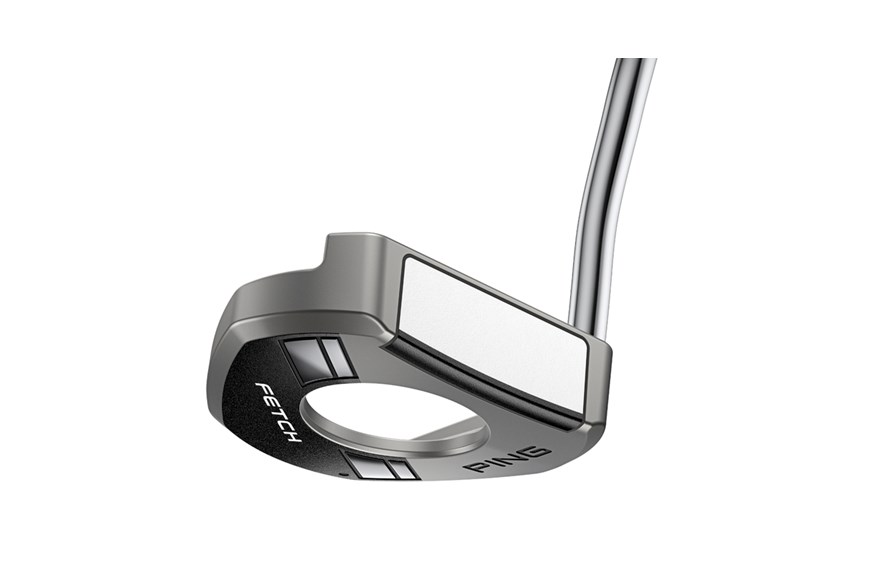
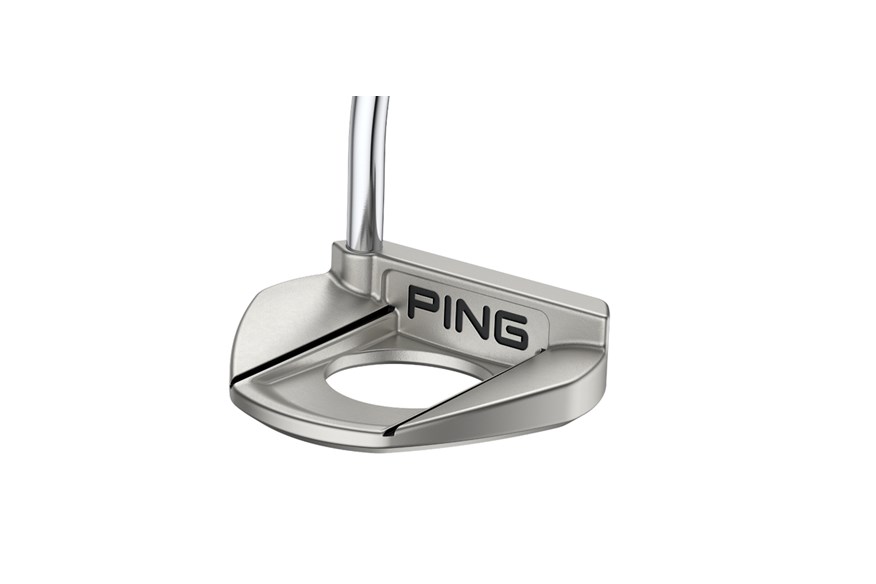
The model could easily fall into the MOI category but because the head is so compact, I reckon it’s a better fit if you're considering smaller body mallets, and you won’t though however be too far wrong if you see the Fetch as sitting high up the forgiveness tree within this category.
I really like the modern golf ball width gauge, it's a feature that has been around for a while now and it’s really useful at helping club golfers impact more putts on the center of the face more often.
It goes without saying the golf ball-sized hole in the head is the best ball scoop on the market.
Ping 2024 Fetch putter
Head Weight: 365g Stroke Type: Straight Offset: Full Shaft
View Offer UK
Pros
- A brilliant golf ball scoop
- The PP60 grip is a great size and offers brilliant feel
- The head is really compact
Cons
- There's nothing here not to like, even the price is competitive
| Stock shaft: | Chrome Stepless steel |
| Stock grip: | Ping PP60 |
| Loft: | 3° |
I like the heads size (it weighs in at 360g), whereas other modern fang putters can be big and cumbersome this is sleek, straight-edged beauty. And the back shaping creates a brilliant golf ball width alignment aid. A murdered-out black head and shaft, with a single white sightline, give a completely no-offensive and inviting look at address.
Ping 2024 Tyne H putter
Head Weight: 370g Stroke Type: Slight Arc Offset: Full Shaft
View Offer UK
Pros
- The head's straight edges help with alignment
- The CNC-milled face is firmer than some of the other 2024 models
- Expect a very compact profile
Cons
- There's only one hosel option
| Stock shaft: | Ping Composite (Black) |
| Stock grip: | Ping PP60 |
| Loft: | 3° |
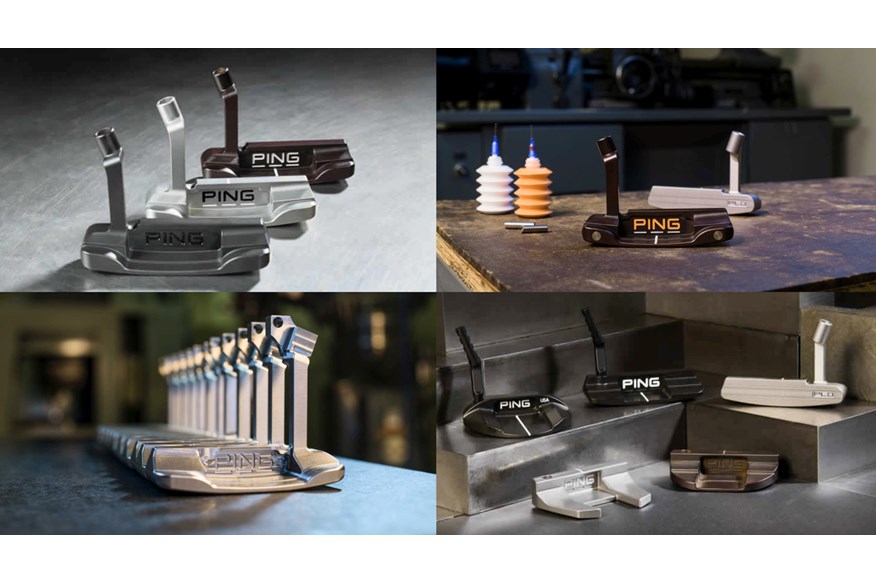
Everything you need to know about Ping PLD Custom putters
Viktor Hovland, Tony Finau, and Bubba Watson have had a direct line into Ping’s Putter Lab for years, but now it’s your turn. Launched in the USA in 2022 (and now available in the UK) PLD Custom is a tour-level fitting experience, where Ping will work with you to create your own perfect putter, just as though you’re a tour player.
You can schedule a fitting at Ping Labs in Phoenix, Arizona, or at Loughborough University, it’s also possible to do it virtually. By hitting a series of 10-foot putts (with an iPod installed with Ping’s iPing app attached to your putter) and talking your flatstick game through with one of Ping’s elite fitters, you get to custom your own PLD putter from top to bottom.
It’s not a cheap route into Ping putters in the UK it’s £200 for the fitting plus a further £1800 when you order your putter, but you get to choose everything from loft to lie and grip type, as well as deciding on whether you want tungsten weighting, face milling, what type of finish best suits your eye, alignment aid types, engravings and paint fill colors, in exactly the same way top tour players do.
Buying Guide & FAQ’s
Which tour pros use Ping putters?
Ping putters are nowhere near as dominant on tour as they were in the 80’s and 90’s but thanks to the PLD franchise they have clawed themselves back a decent chunk of market share amongst the best players in the world.

World Number 5 Viktor Hovland uses a PLD DS72. Sahith Theegala uses a TR 1966 Anser 2. Whereas Tyrrell Hatton uses a Vault Oslo and Tony Finau plays a PLD Anser 2D, so there’s a good amount of very elite players who earn their crust using Ping putters.
Are there any grip options when buying a Ping putter?
Ping is all about giving golfers the exact set-up they want and to ensure you’re not left wanting when it comes to grips, Ping putters come with a choice of grips.
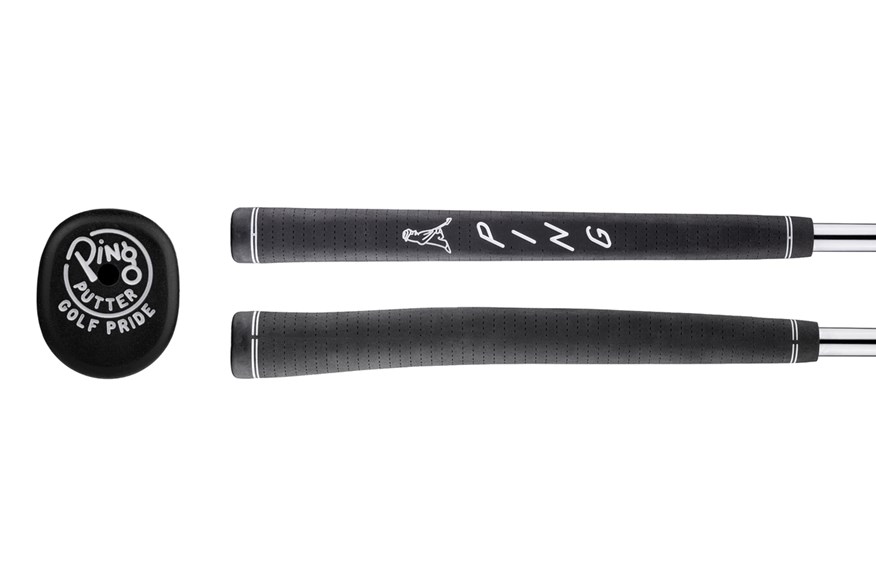
The 87g Ping PP58 is Ping’s traditional style model, it’s a pistol-shaped midsize version of the iconic grip used by Tiger Woods to win his 15 majors. In Europe this model comes as the stock grip on the 2024 models, Ping says it naturally encourages squaring the putter face at impact.
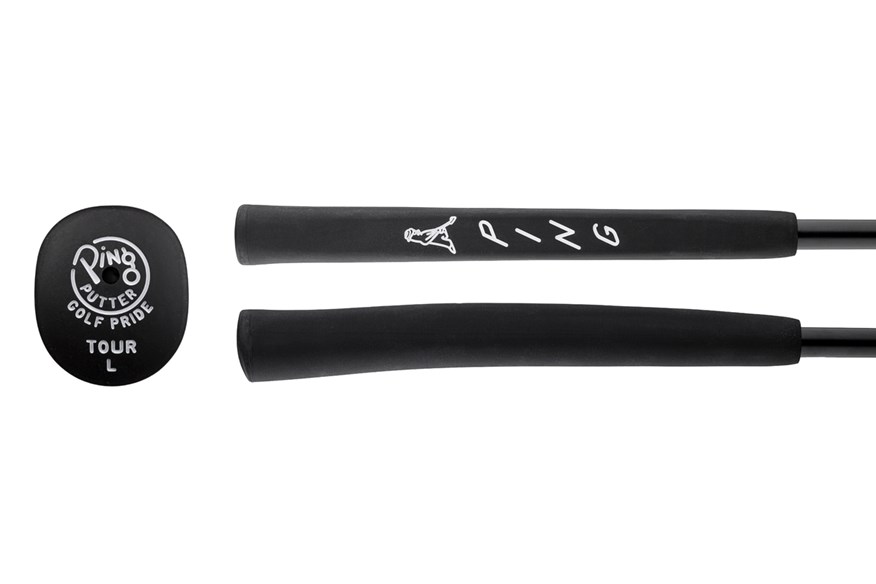
There’s also the option of the brilliant Lamkin-produced PP60 (with an upcharge), this midsize grip has larger flat surfaces for increased face awareness (88g weight). Whereas a further straight taper PP58 S (99g), has pronounced flat surfaces and is available as a no-upcharge custom order.
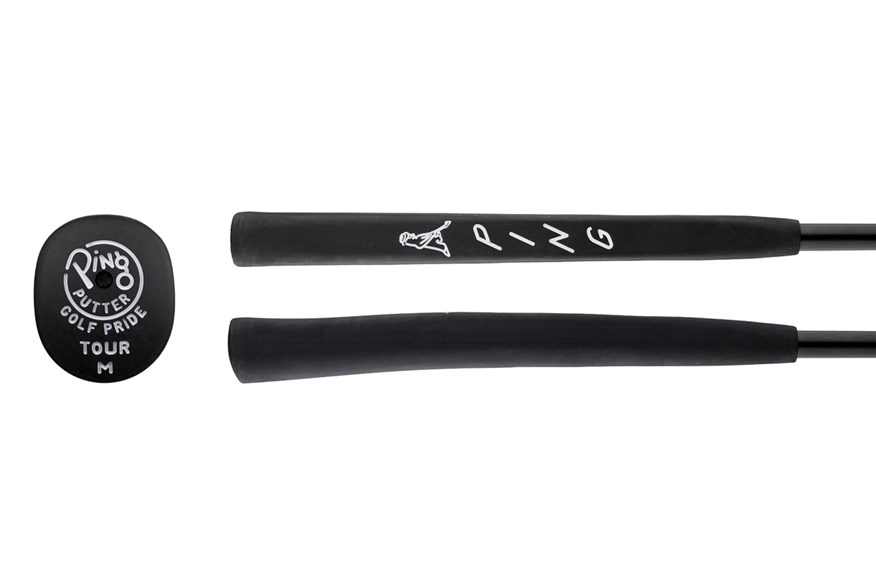
If you’re in doubt over which grip best suits you, a general rule of thumb is smaller grips tend to suit slight and stronger arcing strokes better. Where larger models like the Ping PP60 inhibit wrist break so are often a better fit for straighter stroke players.
Which Ping putter is most forgiving?
Ping doesn’t publish MOI information for any of their putter models, but it’s not too difficult to spot which models are going to offer more forgiveness than their counterparts. The stretched wide body of the Ketsch G will compete with the most forgiving putters on the market, while the 2024 Fetch and 2024 Tyne H will not be too far behind.
If it’s forgiveness you’re looking for stay away from the narrow body blades, as these are the least forgiving in Ping’s line-up. In 2025 golfers who swear blade putters fit their eye will also likely be better served by the wider body and more forgiving Anser 2D than the original Anser.
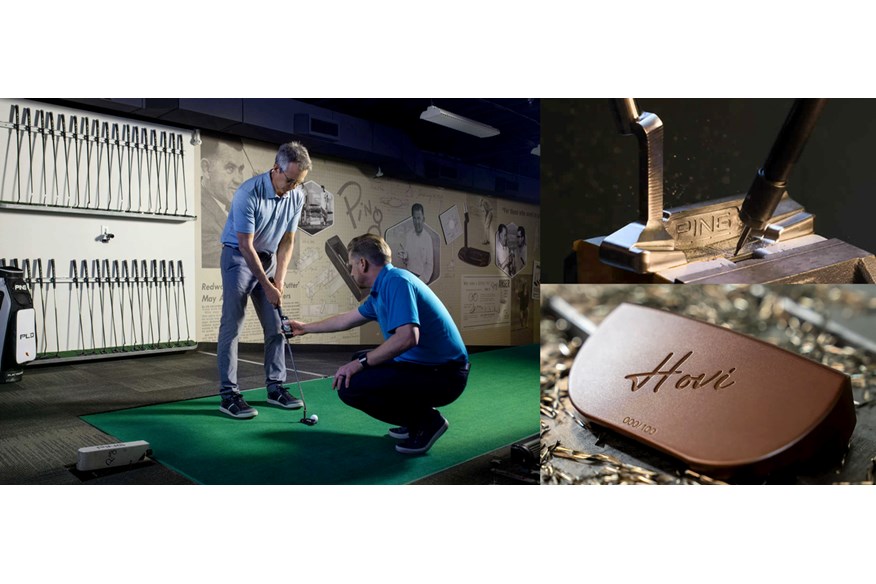
Will buying a Ping PLD Custom putter offer the ultimate putter fitting experience?
Very few putter brands can not only fit you but also offer direct input into your new putter’s shape, finish, and feel – Ping do. Of course, I cannot recommend every golfer go the PLD Custom route as it’s such a huge investment in a flatstick, but I know lots of golfers will love the experience and get a lot out of designing their own putter with the help of a Ping engineer.
If you’re looking for the ultimate putter fitting experience and have a truly one-off putter to show for it at the end of the process Ping’s PLD Custom experience is second to absolutely none. Would I feel comfortable paying £2000 for the pleasure? Probably not but there are plenty of well-heeled golfers who will be.
Are the Ping PLD 2024 putters 100% CNC Milled?
Yes, all of the Ping PLD 2024 putters are 100% CNC Milled, that’s why each head can take up to 4 hours for a CNC machine to make. That’s a huge investment of time to create a single putter which ties up significant time on the machine and explains why CNC Milled putters are so expensive.
Unlike Scotty Cameron and Bettinardi though Ping doesn’t make a big play about their PLD models being ‘Made in the USA’, so it’s highly likely the brand uses a third-party supplier somewhere in Asia.
About the author

Simon Daddow
Today’s Golfer Equipment Editor
Simon Daddow is the Equipment Editor for Today’s Golfer. Having tested and played more than 10,000 clubs in his life, what he doesn’t know about golf clubs isn’t worth knowing.
He’s a specialist in all things metal having spent a large part of his career as a golf club maker and product development manager, and has worked in the golf industry for more than 30 years. Starting out as trainee professional at Downes Crediton GC where he learned the art of golf club making, he went onto work for Clubhaus Plc and Tony Charles Ltd as a golf club maker, and running Product Development at Benross Golf.
Simon also spent time working as a Sales Executive in Harrods’ golf department, even helping supply Sir Nick Faldo with personalized shirts in a last-minute emergency ahead of a flight to a tournament.
He joined EMAP Active (now Bauer Media) as Equipment Editor in 2006 and has worked for both Today’s Golfer and Golf World. Working alongside our test pro Neil Wain, Simon has made todays-golfer.com the most reliable source for golf club testing.
Despite his youthful looks, Simon has played golf for more than 40 years and plays to a handicap of 10. A lack of club speed means he’s short off the tee, but very handy from 125 yards and in.
He enjoys excellent relationships with the biggest names in the golf equipment industry, including PXG boss Bob Parsons and TaylorMade’s Tomo Bystedt and Adrian Rietveld.
Away from the course, Simon is a season-ticket holder at Peterborough United Football Club, attending games with his young son. He’s also a keen cyclist and enjoys working (and relaxing) at his allotment.
His favorite ever piece of golf equipment is the Callaway Warbird fairway wood and he considers the biggest technological advancement in the game to have been titanium driver heads.
Simon’s job means he plays regularly around the world, and rates Kingsbarns as his favorite course. He uses a PXG 0311 GEN6 XF driver, TaylorMade Stealth 2 HL (15º), Ping G400 (20.5º), PXG 0317 X Gen2 hybrid, PXG 0311 GEN6 P irons (6–PW), Cleveland CBX2 wedges (52°, 58°), Ping 21 Fetch putter and a TaylorMade Tour Response golf ball.
You can contact Simon via email and follow him on Twitter for loads more golf equipment insight.
-
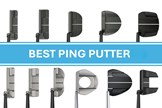 The Ping Putter
The Ping Putter
-
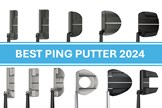 Address images of the whole Ping 2024 putter line up
Address images of the whole Ping 2024 putter line up
-
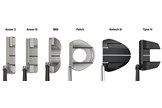 The whole six model Ping 2024 Putter family at address
The whole six model Ping 2024 Putter family at address
-
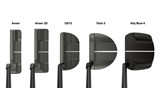 All five Ping PLD 2024 putters at address
All five Ping PLD 2024 putters at address
-
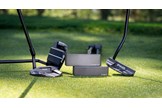 The full five model Ping PLD 2024 putter family on a green
The full five model Ping PLD 2024 putter family on a green
-
 The six model ping 2024 putter family on a green
The six model ping 2024 putter family on a green
-
 Tyrrell Hatton, Viktor Hovland and Tony Finau all using their Ping putters
Tyrrell Hatton, Viktor Hovland and Tony Finau all using their Ping putters
-
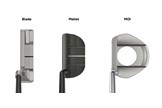 An image showing the difference in shape and profile between a Blade, Mallet and MOI putter.
An image showing the difference in shape and profile between a Blade, Mallet and MOI putter.
-
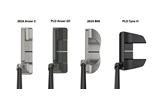 The two different Ping putter families in 2024
The two different Ping putter families in 2024
-
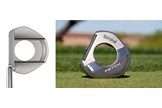 The Ping 2024 Fetch putter sole and in the play position
The Ping 2024 Fetch putter sole and in the play position
-
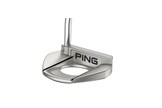 A close up of the back and golf ball sized alignment aid on the Ping 2024 Fetch putter
A close up of the back and golf ball sized alignment aid on the Ping 2024 Fetch putter
-
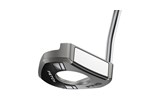 A close up of the soft face insert in the Ping 2024 Fetch putter
A close up of the soft face insert in the Ping 2024 Fetch putter
-
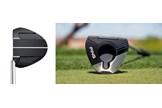 The Ping 2024 Ketsch G putter sole and in the play position
The Ping 2024 Ketsch G putter sole and in the play position
-
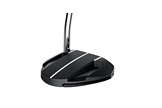 A close up of the back and crown of the Ping 2024 Ketsch G Putter
A close up of the back and crown of the Ping 2024 Ketsch G Putter
-
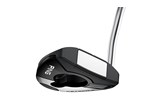 A close up of the face insert detail of the Ping 2024 Ketsch G putter
A close up of the face insert detail of the Ping 2024 Ketsch G putter
-
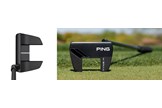 A close up of the Ping 2024 Tyne H putter sole and address/sightline detail
A close up of the Ping 2024 Tyne H putter sole and address/sightline detail
-
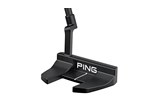 A close up of the fang back shape of the Ping 2024 Tyne H putter
A close up of the fang back shape of the Ping 2024 Tyne H putter
-
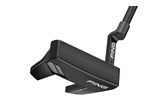 A close up of the CNC Milled face of the Ping 2024 Tyne H putter
A close up of the CNC Milled face of the Ping 2024 Tyne H putter
-
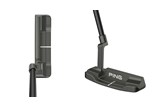 The Ping PLD Anser 2024 putter back and a close up in the play position
The Ping PLD Anser 2024 putter back and a close up in the play position
-
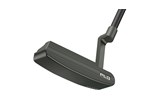 A close up of the CNC Milled face of the Ping PLD Anser 2024 putter
A close up of the CNC Milled face of the Ping PLD Anser 2024 putter
-
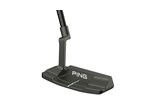 A close up of the cavity back shape and detailing on the Ping PLD Anser 2D putter
A close up of the cavity back shape and detailing on the Ping PLD Anser 2D putter
-
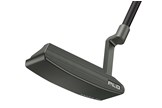 A close up of the CNC Milled pattern on the face of the Ping PLD Anser 2D putter
A close up of the CNC Milled pattern on the face of the Ping PLD Anser 2D putter
-
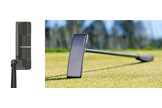 The Ping PLD Anser 2D on a green and in the play position
The Ping PLD Anser 2D on a green and in the play position
-
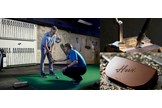 A golfer being fitted for a Ping PLD Custom putter at the brands Scottsdale HQ
A golfer being fitted for a Ping PLD Custom putter at the brands Scottsdale HQ
-
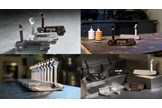 Various Ping PLD Custom Putters to show the amount of choice and options when designing your own putter
Various Ping PLD Custom Putters to show the amount of choice and options when designing your own putter
-
 The Ping PLD DS72 putter with a Today's Golfer Best of 2024 badge
The Ping PLD DS72 putter with a Today's Golfer Best of 2024 badge
-
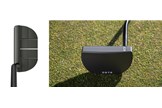 The Ping PLD DS72 2024 putter laying on a green and in the play position
The Ping PLD DS72 2024 putter laying on a green and in the play position
-
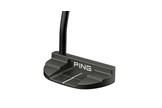 A close up of the cavity back shape and detail of the Ping PLD DS72 2024 putter
A close up of the cavity back shape and detail of the Ping PLD DS72 2024 putter
-
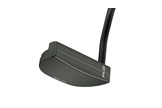 A close up of the milling pattern on the face of the Ping PLD DS72 putter
A close up of the milling pattern on the face of the Ping PLD DS72 putter
-
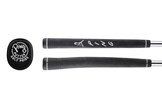 The shape, profile and end cap of the Ping PP58 Midsize putter grip
The shape, profile and end cap of the Ping PP58 Midsize putter grip
-
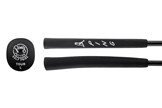 The shape and profile of the Ping PP58 Tour L putter grip
The shape and profile of the Ping PP58 Tour L putter grip
-
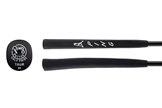 The shape and profile of the Ping PP58 Tour M putter grip
The shape and profile of the Ping PP58 Tour M putter grip
